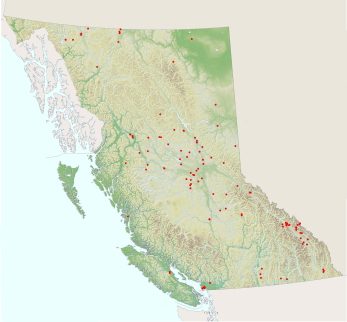Large, swift-flying dragonflies, usually marked with blue, green or yellow. Adults hunt tirelessly for insects over ponds, lakes and streams, and wander widely in search of prey. Most species rest in a vertical position, but a few sit flat on the ground. Females have a prominent ovipositor and lay eggs in water plants or floating wood above or below the water line. Larvae are slender and sleek, with flat labia lacking bristles; they are rapacious hunters among water plants. Recently, A. californica and A. multicolor have been transferred from Aeshna to Rhionaeschna.
|
Lives in peatland habitats – bogs and deep fens that are dominated by aquatic mosses.
|
|
